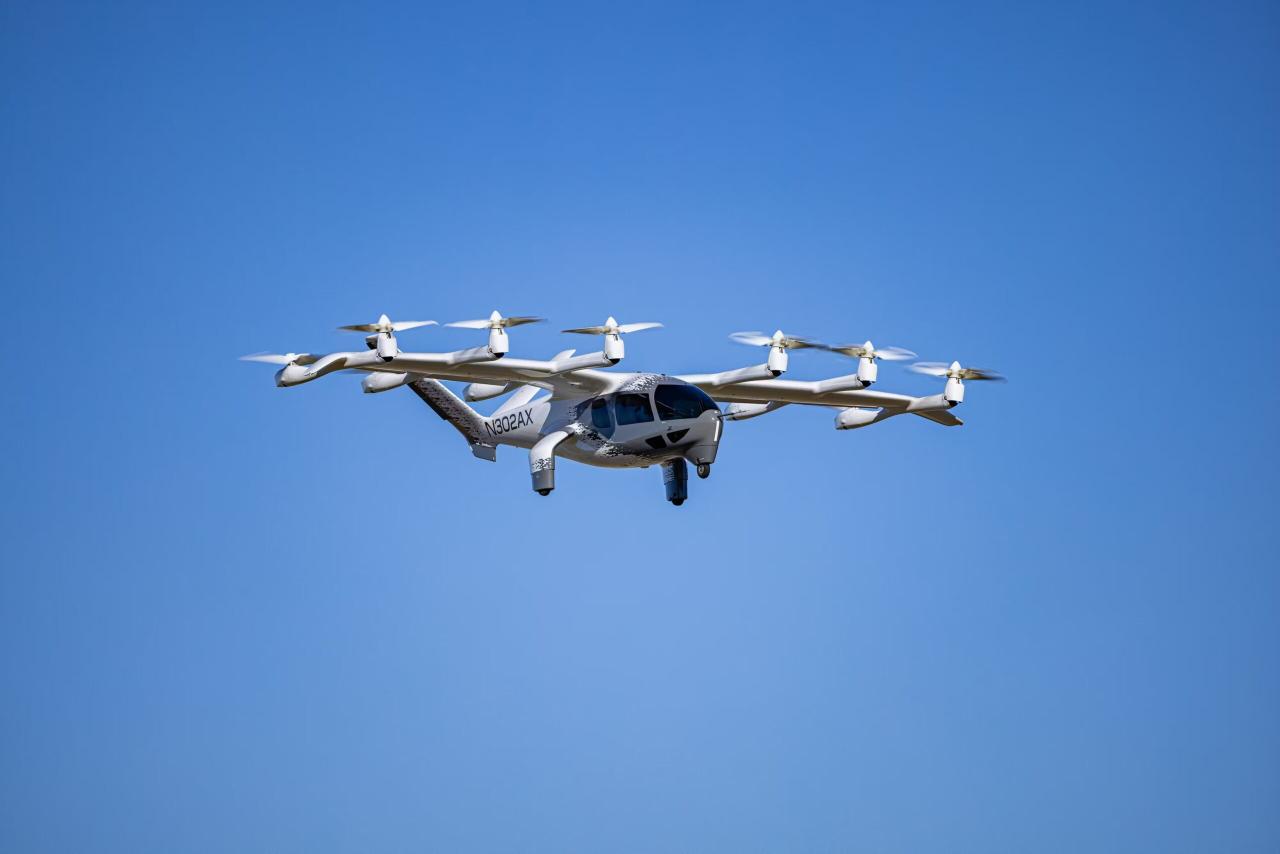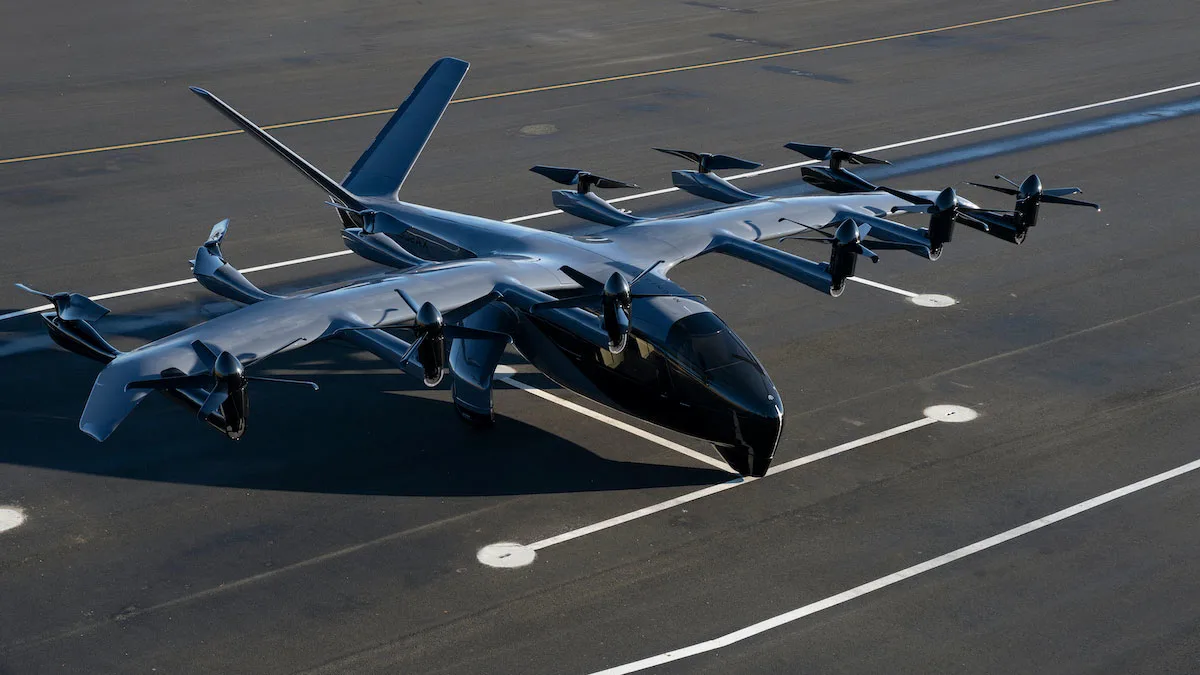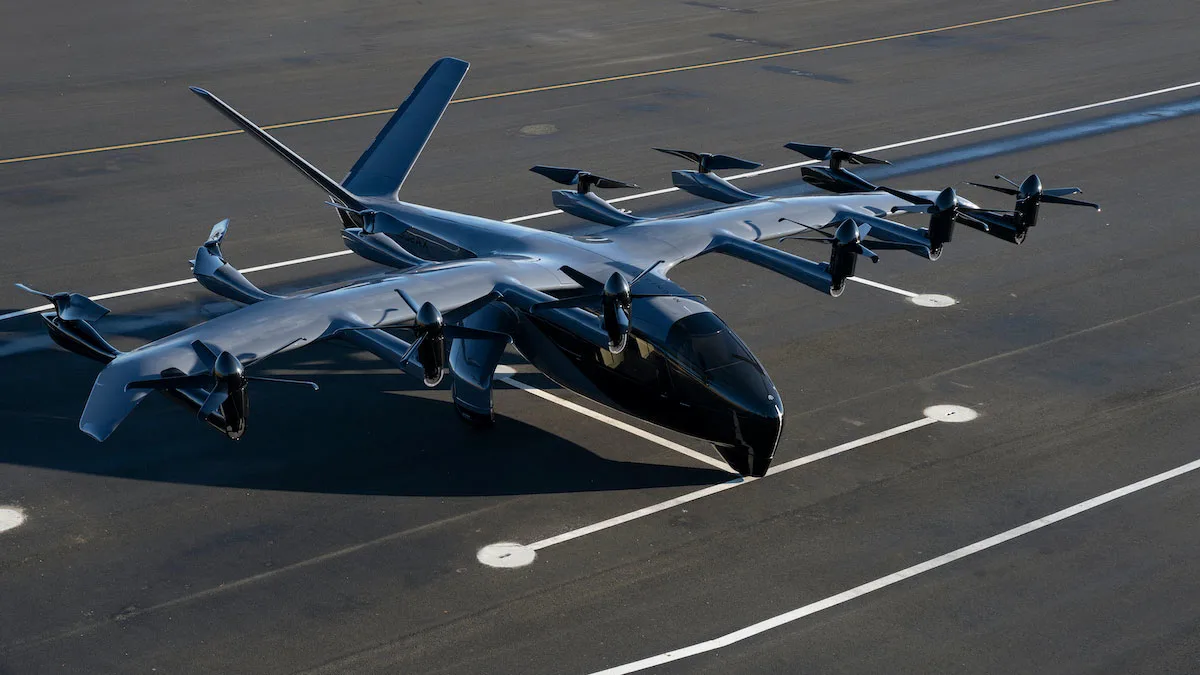Archer Aviation is revolutionizing urban air mobility with its innovative electric vertical takeoff and landing (eVTOL) aircraft. This exploration delves into the company’s history, technology, market position, financial performance, and future outlook, providing a comprehensive understanding of Archer Aviation’s role in shaping the future of air travel.
From its inception to its ambitious plans for widespread eVTOL adoption, Archer Aviation presents a compelling case study in technological innovation and entrepreneurial drive within the burgeoning urban air mobility sector. This analysis examines the challenges and opportunities facing the company, offering insights into its potential for long-term success.
Archer Aviation Company Overview
Archer Aviation is an American electric vertical takeoff and landing (eVTOL) aircraft company focused on developing and commercializing sustainable air mobility solutions. This overview details the company’s business model, history, leadership, and competitive landscape within the burgeoning eVTOL market.
Archer Aviation’s Business Model and Mission Statement
Archer Aviation’s business model centers around the design, manufacturing, and operation of eVTOL aircraft for urban air mobility (UAM). Their mission is to revolutionize urban transportation through safe, sustainable, and efficient air travel. This involves not only producing the aircraft but also developing the necessary infrastructure and operational systems to support widespread adoption.
Archer Aviation’s History and Key Milestones

Founded in 2018, Archer Aviation has rapidly progressed through several key milestones. These include securing significant funding rounds, establishing strategic partnerships, achieving critical design and engineering advancements, and commencing flight testing of its flagship eVTOL aircraft. The company’s timeline demonstrates a commitment to rapid innovation and market entry.
Archer Aviation’s Leadership Team and Organizational Structure
Archer Aviation boasts a leadership team with extensive experience in aerospace engineering, manufacturing, and business development. The organizational structure is designed to foster collaboration and innovation across various departments, including engineering, manufacturing, operations, and business development. This structure supports the company’s ambitious growth targets.
Comparison of Archer Aviation with its Main Competitors
The eVTOL market is becoming increasingly competitive. This table compares Archer Aviation’s key features with those of its major competitors.
| Company | Aircraft Model | Range (miles) | Passengers |
|---|---|---|---|
| Archer Aviation | Maker | 60 (estimated) | 4 |
| Joby Aviation | S4 | 150 (estimated) | 4-5 |
| Lilium | Jet | 155 (estimated) | 5 |
| Vertical Aerospace | VAX-4 | 100 (estimated) | 4 |
Archer Aviation’s Technology and Products
Archer Aviation’s technological prowess is central to its success. This section details the design, specifications, and technological advancements incorporated into its eVTOL aircraft.
Design and Specifications of Archer’s eVTOL Aircraft
Archer’s Maker eVTOL aircraft is designed for short-haul urban air travel. Key specifications include a target range of approximately 60 miles, a maximum speed of around 150 mph, and a capacity for four passengers plus a pilot. The aircraft utilizes a unique distributed electric propulsion system for enhanced safety and efficiency.
Technological Advancements Incorporated into Archer’s Aircraft
Archer’s aircraft incorporates several advanced technologies, including high-efficiency electric motors, advanced battery technology, and sophisticated flight control systems. These technologies are crucial for ensuring the aircraft’s safety, performance, and sustainability.
Performance Characteristics Compared to Other eVTOL Designs
Compared to other eVTOL designs, Archer’s aircraft aims for a balance between range, speed, passenger capacity, and operational efficiency. While specific performance metrics vary across competitors, Archer’s focus is on a practical and commercially viable design for urban air mobility.
Visual Representation of Archer’s Aircraft Components
Imagine a sleek, futuristic aircraft with six tilting rotors arranged around a central fuselage. The rotors provide both vertical lift and horizontal propulsion. The fuselage houses the passenger cabin, battery packs, and other critical systems. A sophisticated flight control system manages the complex dynamics of flight.
Market Analysis and Competitive Landscape: Archer Aviation
Understanding the market dynamics and competitive landscape is crucial for Archer Aviation’s success. This section analyzes the target market, demand projections, and competitive positioning.
Archer Aviation’s Target Market and Customer Segments
Archer Aviation’s target market includes commuters, tourists, and businesses seeking faster and more efficient urban transportation options. Customer segments range from individuals to corporations requiring air taxi services.
Analysis of Current and Projected Demand for eVTOL Aircraft
The demand for eVTOL aircraft is projected to grow significantly in the coming years, driven by increasing urbanization, traffic congestion, and the need for sustainable transportation solutions. Several market research firms predict substantial growth in the UAM market, although precise figures vary.
Archer Aviation’s Market Position Compared to Key Competitors
Archer Aviation aims to establish a strong market position by focusing on a practical and commercially viable aircraft design, coupled with strategic partnerships and a commitment to safety and sustainability. The competitive landscape is dynamic, with various companies pursuing different technological approaches and market strategies.
Competitive Landscape: Strengths and Weaknesses
| Company | Strengths | Weaknesses |
|---|---|---|
| Archer Aviation | Focus on practical design, strong partnerships | Relatively new entrant, market validation needed |
| Joby Aviation | Advanced technology, significant funding | Longer development timeline |
| Lilium | High-speed capability | Higher development costs |
| Vertical Aerospace | Established aerospace expertise | Market validation needed |
Financial Performance and Investment
Archer Aviation’s financial performance and investment strategies are key indicators of its growth and sustainability. This section provides an overview of its financial standing and future prospects.
Archer Aviation’s Financial Performance
Archer Aviation’s financial performance is characterized by significant investments in research and development, coupled with funding secured through various investment rounds and partnerships. Detailed financial statements are available through public filings.
Archer Aviation’s Funding Sources and Investment Strategies
Archer Aviation has secured substantial funding through a combination of private equity investments, strategic partnerships, and government grants. The company’s investment strategy focuses on accelerating its development timeline and achieving commercial viability.
Analysis of Archer Aviation’s Financial Projections and Future Growth Potential
Archer Aviation’s financial projections indicate significant growth potential, driven by the anticipated demand for eVTOL aircraft and the company’s successful execution of its business plan. However, realizing this potential is contingent upon overcoming several challenges, including regulatory hurdles and competition.
Timeline of Key Investment Rounds and Partnerships
Archer Aviation’s history includes several key investment rounds and partnerships that have fueled its growth and development. A detailed timeline of these events would highlight the company’s progress and strategic alliances.
Regulatory and Legal Aspects
The regulatory landscape surrounding eVTOL aircraft is complex and evolving. This section addresses the key regulatory and legal considerations for Archer Aviation.
Regulatory Landscape Surrounding eVTOL Aircraft
The regulatory landscape for eVTOL aircraft is still under development, with various aviation authorities establishing certification and operational standards. This involves safety regulations, airspace management, and environmental considerations.
Certifications and Approvals Required for Archer Aviation’s Aircraft

Archer Aviation’s aircraft will require various certifications and approvals from relevant aviation authorities before commercial operation. These certifications address safety, airworthiness, and environmental compliance.
Legal Considerations for Archer Aviation’s Operations and Expansion
Archer Aviation’s operations and expansion will be subject to various legal considerations, including liability, intellectual property, and data privacy. Navigating this complex legal landscape is crucial for the company’s long-term success.
Potential Regulatory Challenges Archer Aviation Might Face
Archer Aviation may face several regulatory challenges, including the evolving nature of eVTOL regulations, potential delays in certification processes, and the need to adapt to changing airspace management strategies.
Future Outlook and Strategic Initiatives
Archer Aviation’s future outlook is promising, but contingent upon overcoming various challenges and executing its strategic initiatives. This section explores the company’s long-term vision and plans for expansion.
Archer Aviation’s Strategic Goals and Long-Term Vision
Archer Aviation’s strategic goals center on establishing itself as a leading provider of sustainable urban air mobility solutions. The company’s long-term vision encompasses widespread adoption of its eVTOL aircraft, transforming urban transportation.
Archer Aviation’s Plans for Expansion and Market Penetration
Archer Aviation’s plans for expansion include scaling its manufacturing capabilities, establishing operational bases in key urban areas, and expanding its network of partners and customers. Market penetration strategies involve demonstrating the safety, efficiency, and economic viability of its aircraft.
Potential Future Technological Advancements and Their Impact
Future technological advancements in battery technology, electric propulsion systems, and autonomous flight control could significantly impact Archer Aviation’s aircraft performance and operational efficiency. These advancements could lead to increased range, speed, and passenger capacity.
Projection of Archer Aviation’s Market Share

Projecting Archer Aviation’s future market share is challenging due to the dynamic nature of the eVTOL market. However, the company’s success will depend on its ability to deliver on its technological promises, secure necessary regulatory approvals, and establish strong market partnerships.
Social and Environmental Impact
The widespread adoption of eVTOL technology will have significant social and environmental implications. This section examines Archer Aviation’s efforts to mitigate potential negative impacts and maximize positive contributions.
Potential Environmental Impact of Archer Aviation’s Operations
Archer Aviation’s operations will have a reduced carbon footprint compared to traditional helicopter operations due to the electric propulsion system. However, the environmental impact of battery production and disposal needs careful consideration.
Archer Aviation’s Sustainability Initiatives
Archer Aviation is committed to developing sustainable air mobility solutions. The company’s sustainability initiatives focus on reducing the environmental impact of its operations throughout the aircraft lifecycle.
Social Implications of Widespread Adoption of eVTOL Technology
The widespread adoption of eVTOL technology could significantly improve urban transportation, reducing congestion and travel times. However, potential social implications include concerns about noise pollution, equitable access to the technology, and job displacement.
Benefits and Drawbacks of Archer’s Aircraft on Society and the Environment
- Benefits: Reduced traffic congestion, faster commute times, reduced carbon emissions compared to traditional helicopters, increased accessibility to remote areas.
- Drawbacks: Potential noise pollution, impact of battery production and disposal on the environment, concerns about equitable access to the technology, potential job displacement in the traditional transportation sector.
Archer Aviation stands at the forefront of the eVTOL revolution, poised to redefine personal and commercial air travel. While challenges remain in regulatory approvals and market penetration, the company’s technological advancements and strategic partnerships position it for significant growth and a potentially transformative impact on urban transportation. The future of air travel is electric, and Archer Aviation is leading the charge.
Question Bank
What is Archer Aviation’s current market capitalization?
Archer Aviation, a prominent player in the electric vertical takeoff and landing (eVTOL) aircraft sector, faces a complex competitive landscape. The development of advanced drone technology, such as the shahed drone , highlights the rapid advancements in unmanned aerial systems and presents both opportunities and challenges for companies like Archer, prompting them to innovate and further refine their eVTOL designs for improved safety and efficiency.
Ultimately, Archer’s success will depend on its ability to adapt to this evolving technological environment.
Archer Aviation’s market capitalization fluctuates and should be checked on a reputable financial website for the most up-to-date information.
When is Archer Aviation expected to begin commercial operations?
Archer Aviation, a prominent player in the burgeoning eVTOL market, faces increasing regulatory scrutiny as the industry matures. This is highlighted by recent events such as the incident detailed in this article, nj drone shot down , which underscores the safety concerns surrounding unmanned aerial vehicles. Such incidents, while not directly involving Archer, raise broader questions about airspace management and the need for robust safety protocols, directly impacting companies like Archer Aviation as they navigate the complex regulatory landscape.
Archer Aviation has announced projected timelines for commercial operations, but these are subject to change based on regulatory approvals and other factors. Check their investor relations materials for the latest projections.
What safety features are incorporated into Archer’s eVTOL aircraft?
Archer’s aircraft incorporate multiple redundancy systems, advanced sensors, and fail-safe mechanisms to ensure passenger and operational safety. Specific details are often proprietary but are addressed in their safety reports.
How does Archer Aviation plan to address the noise pollution associated with eVTOL operations?
Archer Aviation is actively working to minimize noise pollution through design innovations and operational procedures. Specific noise reduction strategies are usually Artikeld in their sustainability reports.
